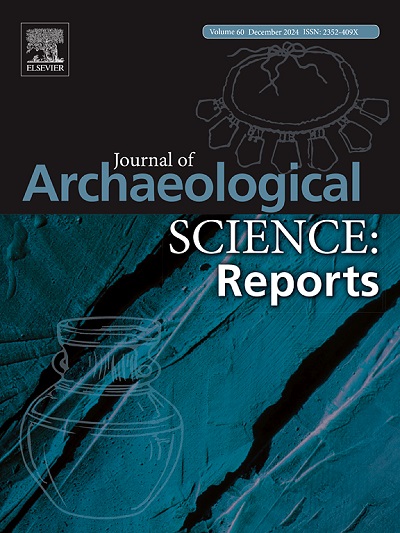Paleodietary reconstruction of the past populations at Jiayi cemetery from the Bronze Age to the Early Iron Age in Turpan, Xinjiang, China
IF 1.5
2区 历史学
0 ARCHAEOLOGY
引用次数: 0
Abstract
The Turpan Basin in Xinjiang, China, serves as a crucial nexus connecting the Eurasian continent. Reconstructing the dietary structure and economic livelihood of local ancestors from the Bronze Age to the Early Iron Age contributes to the elucidation of the historical processes of food globalization and cultural exchange between East and West. This study investigates the impact of prehistoric food globalization on the Xinjiang region, particularly the role and significance of millet and Triticeae crops in the local economy. To achieve this, 43 individuals aged over 14 from the Jiayi cemetery in the Turpan Basin were selected to elucidate their dietary sources and economic activities. The stable carbon and nitrogen isotope analysis results of the Jiayi individuals (δ13C: −15.8 ± 1.3 ‰; δ15N: 11.8 ± 0.7 ‰, n = 43) indicate that they predominantly consumed mixed C3/C4-based foods with a notable intake of animal protein. Specifically, adolescents consumed more C4-based foods, while the dietary patterns of young adults and middle-aged adults were more similar. No significant differences were observed in the diets of individuals concerning sex or socioeconomic status. The diet of the Jiayi people likely included C3 plants such as naked barley (Hordeum vulgare var. coeleste) and C4 plants such as broomcorn millet, along with a significant proportion of animal products such as meat and dairy. The Jiayi cemetery provides evidence of the sustained impact of prehistoric food globalization on the local economic livelihood. Millet and Triticeae crops, which originated from both the East and the West, became crucial food sources for Xinjiang ancestors from the Bronze Age to the early Iron Age, enhancing and diversifying their economic endeavors.
中国新疆吐鲁番嘉义墓地青铜时代至铁器时代早期人群的古脊椎动物学重建
中国新疆吐鲁番盆地是连接欧亚大陆的重要纽带。重建当地先民从青铜时代到早期铁器时代的饮食结构和经济生活,有助于阐明东西方饮食全球化和文化交流的历史进程。本研究探讨了史前食物全球化对新疆地区的影响,尤其是粟和三尖杉作物在当地经济中的作用和意义。为此,研究人员从吐鲁番盆地的贾谊墓地选取了 43 名 14 岁以上的个体,以阐明他们的饮食来源和经济活动。嘉依人的稳定碳和氮同位素分析结果(δ13C:-15.8 ± 1.3 ‰;δ15N:11.8 ± 0.7 ‰,n = 43)表明,他们主要食用以 C3/C4 为主的混合食物,动物蛋白摄入量显著。具体来说,青少年摄入更多的是以 C4 为基础的食物,而青壮年和中年人的膳食模式较为相似。在性别和社会经济地位方面,他们的膳食没有明显差异。嘉义人的膳食可能包括裸麦(Hordeum vulgare var. coeleste)等 C3 植物和扫帚小米等 C4 植物,以及相当比例的肉类和乳制品等动物产品。嘉义墓地提供了史前食物全球化对当地经济生活持续影响的证据。源于东西方的小米和三尖杉作物成为新疆先民从青铜时代到铁器时代早期的重要食物来源,增强了他们的经济实力并使其多样化。
本文章由计算机程序翻译,如有差异,请以英文原文为准。
求助全文
约1分钟内获得全文
求助全文
来源期刊

Journal of Archaeological Science-Reports
ARCHAEOLOGY-
CiteScore
3.10
自引率
12.50%
发文量
405
期刊介绍:
Journal of Archaeological Science: Reports is aimed at archaeologists and scientists engaged with the application of scientific techniques and methodologies to all areas of archaeology. The journal focuses on the results of the application of scientific methods to archaeological problems and debates. It will provide a forum for reviews and scientific debate of issues in scientific archaeology and their impact in the wider subject. Journal of Archaeological Science: Reports will publish papers of excellent archaeological science, with regional or wider interest. This will include case studies, reviews and short papers where an established scientific technique sheds light on archaeological questions and debates.
 求助内容:
求助内容: 应助结果提醒方式:
应助结果提醒方式:


